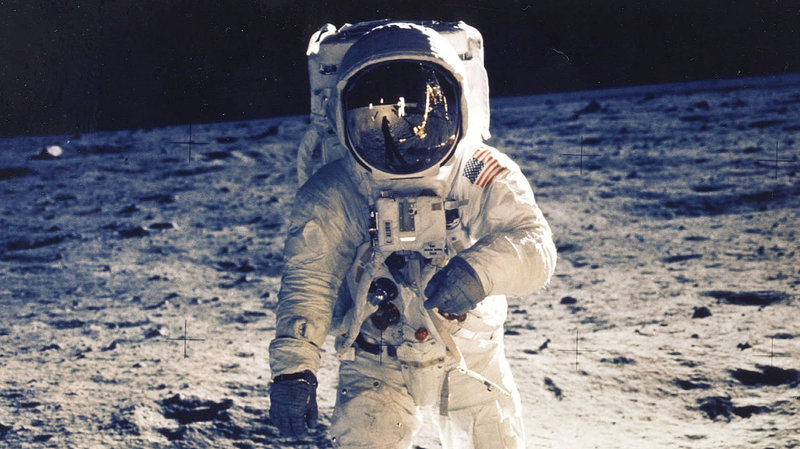The Biggest Nonmilitary Effort in the History of Human Civilization

Charles Fishman has a new book, One Giant Leap, all about NASA’s Apollo program to land an astronaut on the moon. He talks about it on Fresh Air with Dave Davies.
On what computers were like in the early ’60s and how far they had to come to go to space
It’s hard to appreciate now, but in 1961, 1962, 1963, computers had the opposite reputation of the reputation they have now. Most computers couldn’t go more than a few hours without breaking down. Even on John Glenn’s famous orbital flight — the first U.S. orbital flight — the computers in mission control stopped working for three minutes [out] of four hours. Well, that’s only three minutes [out] of four hours, but that was the most important computer in the world during that four hours and they couldn’t keep it going during the entire orbital mission of John Glenn.
So they needed computers that were small, lightweight, fast and absolutely reliable, and the computers that were available then — even the compact computers — were the size of two or three refrigerators next to each other, and so this was a huge technology development undertaking of Apollo.
On the seamstresses who wove the computer memory by hand
There was no computer memory of the sort that we think of now on computer chips. The memory was literally woven … onto modules and the only way to get the wires exactly right was to have people using needles, and instead of thread wire, weave the computer program. …
The Apollo computers had a total of 73 [kilobytes] of memory. If you get an email with the morning headlines from your local newspaper, it takes up more space than 73 [kilobytes]. … They hired seamstresses. … Every wire had to be right. Because if you got [it] wrong, the computer program didn’t work. They hired women, and it took eight weeks to manufacture the memory for a single Apollo flight computer, and that eight weeks of manufacturing was literally sitting at sophisticated looms weaving wires, one wire at a time.
One anecdote that was new to me describes Armstrong and Aldrin test-burning moon dust, to make sure it wouldn’t ignite when repressurized.
Armstrong and Aldrin actually had been instructed to do a little experiment. They had a little bag of lunar dirt and they put it on the engine cover of the ascent engine, which was in the middle of the lunar module cabin. And then they slowly pressurized the cabin to make sure it wouldn’t catch fire and it didn’t. …
The smell turns out to be the smell of fireplace ashes, or as Buzz Aldrin put it, the smell of the air after a fireworks show. This was one of the small but sort of delightful surprises about flying to the moon.





Stay Connected